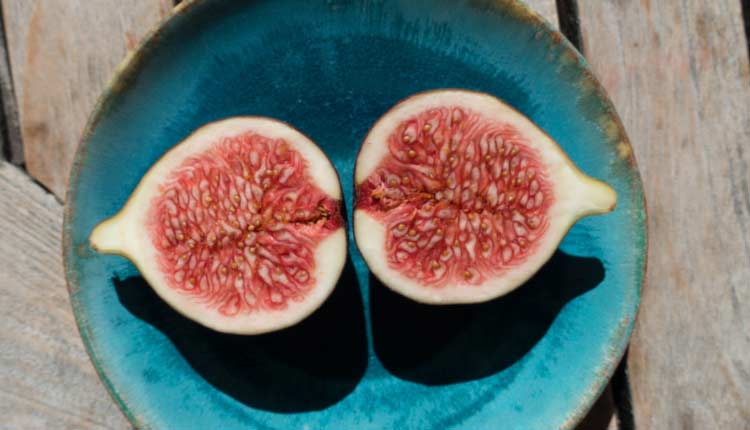Did you know there is a special type of wasps whose life mission is to pollinate figs?
To all the vegetarians and vegans out there who enjoy the lovely taste of figs, here’s some bad news: most of the figs from a classic fig tree contain at least one dead wasp. Therefore, as disappointing as it may sound, they are not at all suitable for your diet.
As a matter of fact, figs are not even fruits.
Technically, they are inverted flowers.
Did that just make you question everything you know about fruits and veggies?

Since the flowers of a fig tree bloom inside out, their pollination doesn’t go as smooth as that of fruits like apples and cherries. The tree’s flowers blossom inside the pod, which later becomes the actual fig fruit we eat. After they bloom, each of the flowers produces achene – a single, one-seeded fruit. Achene is what gives the figs this pleasant crunch we love. And as a single fig contains many achenes, eating it is like eating multiple fruits at once.
But wait, there’s more!
If a fig flower blooms internally, how would they pollinate?
Unfortunately, figs cannot rely on the wind or busy bees to spread their pollen. That’s why they need a special species to crawl inside the flower, collect their pollen, and spread it to other figs. As you already may assume, that’s the fig wasp.
Figs and fig wasps have a special bond called mutualism. While figs can’t survive without the fig wasps which spread their pollen, fig wasps can’t live without the fig, as that’s where they lay their eggs. Their existence depends on their unique connection. It’s like nature created both figs and fig wasps to show us some species cannot live without one another, regardless of their differences, as if they were actual soulmates.
So, here’s how the magic happens. The female fig wasp enters the male fig to lay its larva. Don’t worry, we only eat female figs. In the process, as the entrance is way too tiny even for the special wasp to enter, it loses its wings and antennae on its way. Once it’s in, the female wasp has no way out. Its only mission is to lay its legs so they can continue the whole life cycle of figs and fig wasps.
After the mama wasp lays its eggs, the new male wasps mate with the female ones, which are actually their sisters. Then, the male wasps dig tunnels out of the fig, so the females can get out and continue the process.
Here’s another interesting fact: Male fig wasps are born without wings. That’s because their sole purpose is to mate and dig tunnels, so their sisters could spread the pollen to other figs.

So, are there dead wasps in the figs we consume?
Sometimes, fig wasps accidentally enter female figs. Yes, the ones we eat.
As there is no room for the female wasp to lay its eggs, and it cannot escape because its wings have broken off on the way in, its only option is to die inside of the fig. However, its death isn’t entirely senseless because that’s how it delivers the pollen giving us the fruit we love.
If you’re starting to get sick, thinking that the fig crunch comes from a dead wasp, don’t worry. Nature isn’t that cruel. In fact, the fig uses a special enzyme called ficin, which breaks down the wasp’s body into natural protein. Well, technically, you are eating dead wasps when munching on figs, but you also have some extra nutrition. Besides, wasps are incredibly small, so one or two over breakfast wouldn’t hurt that much.
The good news is, more than 95% of figs produced and sold commercially in California are self-pollinating. That’s great because Cali is the source of most of the figs in the stores across the US. Karla Stockli, the CEO of the California Fig Advisory Board, explains:
“California produces 100 percent of the nation’s dried figs and 98 percent of fresh figs under the best growing conditions and highest quality standards in the world.”
Hopefully, these mindblowing facts about figs won’t make you entirely cut them off of your diet.
Did you know all these interesting fig facts before reading the article? If not, are you going to never look at figs the same way? Let us know in the comment section!



